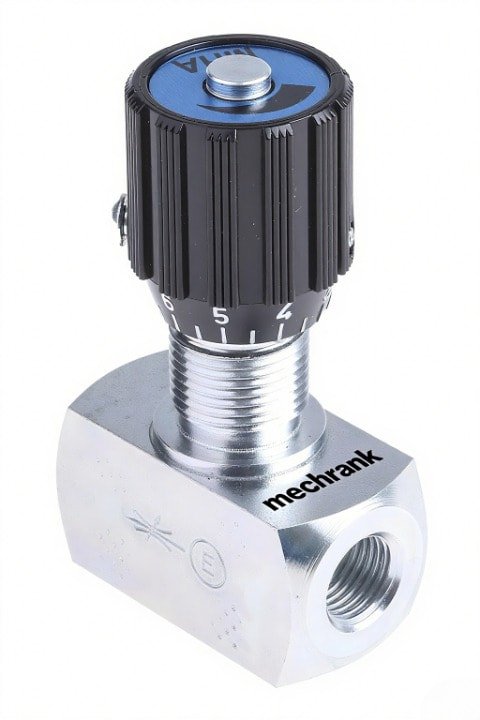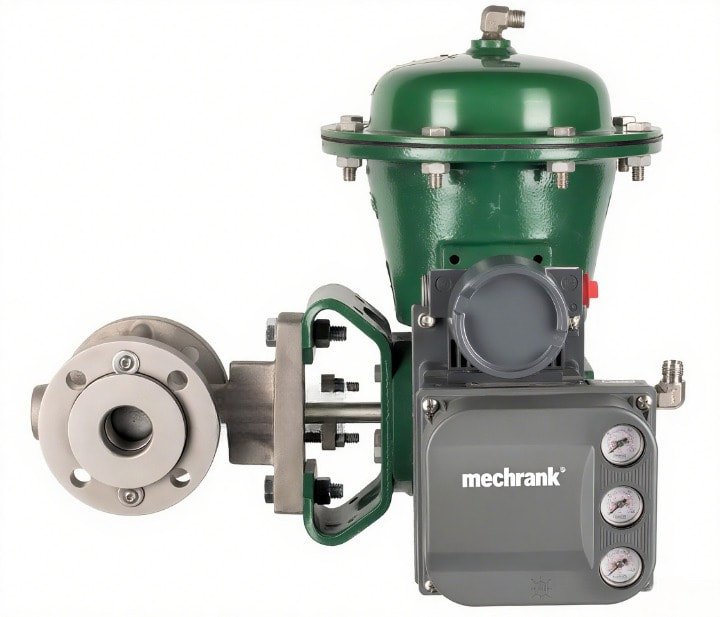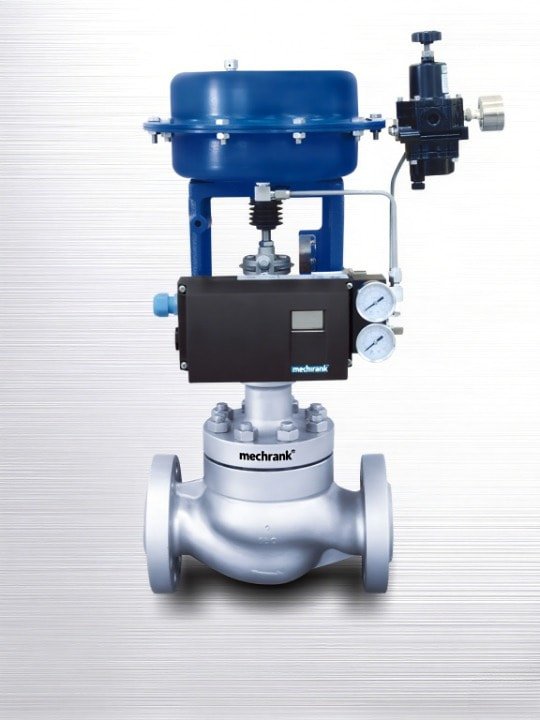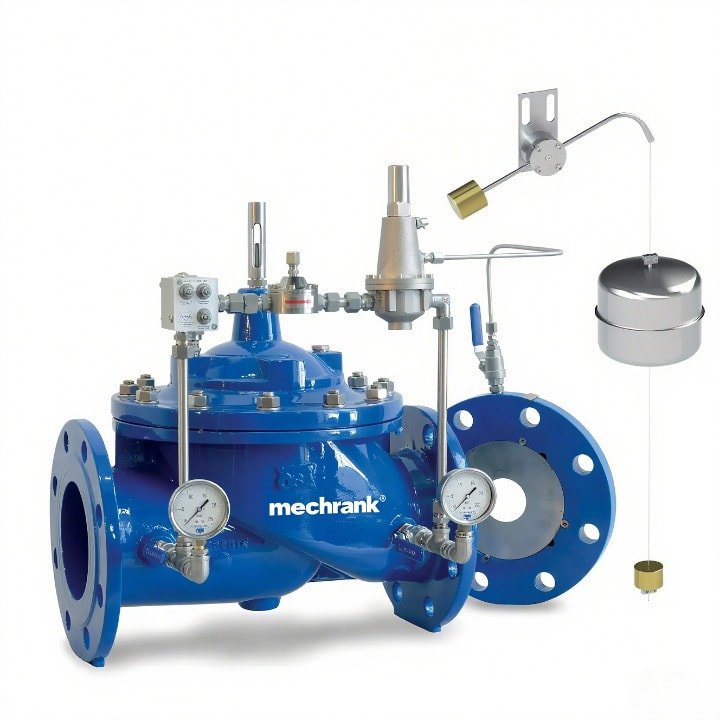A control valve changes how much fluid can pass by making the opening bigger or smaller. It does this when it gets signals from a controller. Engineers use control valves as the last part that controls things in a system. This helps them make sure everything is controlled very well. Different fluids go through these valves in factories:
Wastewater
Steam
Corrosive and abrasive fluids
Fuel and fire protection fluids
Pharmaceuticals and food processing fluids
This control helps keep work safe, efficient, and reliable in many industries.
Key Takeaways
Control valves change how much fluid moves by opening or closing. They do this when they get signals. This helps factories stay safe and work well.
There are different types of valves, like linear and rotary motion valves. Each type works best with certain fluids and jobs. Picking the right valve is very important.
The main parts of a valve are the valve body and actuator. There are also accessories like positioners. These parts work together to control flow exactly.
Picking, sizing, and installing the right valve stops problems. It also makes the system safer and more reliable.
Doing regular maintenance and fixing problems helps valves last longer. Using automation tools also keeps control valves working well.
What Are the Basics of Control Valve Operation?
Control valves regulate the flow of fluids by varying the size of the flow passage. They are essential in maintaining the desired level of fluid flow, pressure, temperature, or liquid level in a system.
Definition
A control valve is a tool that controls how much fluid moves in a pipe. It can handle liquids, gases, or steam. Engineers use control valves to change things like pressure, temperature, and flow rate. The control valve has three main parts. These are the valve body, the actuator, and the trim inside. The actuator pushes the valve stem up or down. This makes the opening inside the valve bigger or smaller. When the opening changes, more or less fluid can go through.
Tip: There are many types of control valves. Each type works best with certain fluids and jobs.
Working Principle
Control valves work by getting signals from a controller. These signals tell the actuator to open or close the valve. The actuator can use air, electricity, or hydraulic fluid for power. When the actuator moves, it pushes a part inside the valve, like a plug or disc. This changes the space inside the valve. The flow rate or pressure of the fluid also changes.
How a control valve modulates flow:
The controller sends a signal to the control valve.
The actuator moves the inside part of the valve.
The valve opening gets bigger or smaller.
A positioner checks if the valve is in the right spot and fixes it if needed.
Sensors watch the flow and other things. They send this information back to the controller. The controller uses this to keep everything steady. New systems use both analog and digital signals. This helps control and check the system better.
Component | Function |
|---|---|
Valve Body | Holds the inside parts and lets fluid move |
Actuator | Moves the valve stem when it gets a signal |
Positioner | Makes sure the valve is in the right place |
Sensors | Give real-time data about the process |
Role in Process Control
Control valves are very important in factories. They help keep things steady and working well. They change flow, pressure, temperature, and fluid levels to match what is needed. If something changes, the control valve acts fast to fix it. Picking the right valve and taking care of it stops problems like sticking or friction. This helps keep the product good and the process stable.
Note: Engineers test and adjust control valves to make them work better. They check how the valve works, change settings, and test again to get the best results.
Control valves help factories be safe and work well. They cut down on waste and make products better. They also help things run smoothly. When engineers pick the right valve size, they stop problems like overshoot. Regular checks and tuning keep the system in good shape.
What Are the Different Types of Control Valves?
Control valves regulate fluid flow by varying the size of the flow passage. The main types include globe, ball, butterfly, and diaphragm valves.

Control valves have different types for different jobs. The main types depend on how the valve moves to control flow. The table below shows two main motion types and some examples:
Motion Type | Description | Examples |
|---|---|---|
Linear Motion | Valve stem or plug moves straight up and down. | Globe valves, Gate valves, Diaphragm valves, Angle valves, Pinch valves |
Rotary Motion | Valve disc or closure part turns, usually a quarter turn. | Butterfly valves, Ball valves, Plug valves, Eccentric plug valves |
Linear Motion
Linear motion valves move up and down to open or close. Globe valves have a round body and a moving disc. This design lets them control flow very well. Globe valves are good for steam and cooling water systems. They are used when accuracy is important. These valves can cause a big pressure drop because of their shape. Gate valves use a wedge-shaped disc that moves across the flow. These valves are best for stopping flow, not for controlling it. When open, they do not cause much pressure drop. Gate valves work with many fluids and pressures. People use linear motion valves when they need good and steady flow control.
Tip: Linear motion valves react fast to changes in flow. They work for both low and high flow rates.
Rotary Motion
Rotary motion valves control flow by turning a disc or ball. Ball valves use a round ball to start or stop flow. They seal well and shut off quickly. Ball valves are used in oil and gas pipes, chemical plants, and water systems. Butterfly valves use a turning disc and are good for moving lots of liquid or gas at low pressure. These valves are easy to clean and fix. Food factories, ships, and water plants use butterfly valves because they are small and reliable. Rotary motion valves also work in high-pressure and steam jobs. They are good for stopping flow and stopping backflow.
Specialty Valves
Specialty valves are made for tough or special jobs. Severe service valves can handle damage from things like cavitation, noise, vibration, corrosion, and erosion. Makers use strong materials like stainless steel, ceramics, or special metals like Inconel or Hastelloy C. These valves often have special trims and bodies to last longer. Angle valves and globe valves with anti-cavitation trims help with two-phase or high-pressure drop jobs. Specialty valves keep things safe and working well in hard places like chemical plants, power plants, and refineries.
Note: Picking the right specialty valve keeps equipment safe. It also lowers downtime and saves money on repairs in important jobs.
What Are the Main Components of a Control Valve?
A control valve primarily consists of the actuator, body, and valve trim. These components work together to regulate fluid flow by varying the size of the flow passage.

Valve Body
The valve body is the main part of a control valve. It holds the flow path and the trim inside. The trim has a disc or plug that moves. The way the valve body is made changes how fluid moves. It also changes how much pressure drops as fluid goes through. Engineers pick the valve body type and size for the fluid and flow rate. The trim is joined to a stem that moves to change the opening. The yoke connects the actuator to the valve body. It gives support and keeps things lined up. The adjust nut sets how far the actuator moves. The travel indicator shows where the trim is right now.
Picking the right valve body design helps balance pressure drop and flow. This makes the system work better and saves energy.
Actuator
The actuator moves the stem and trim to control flow. It gets signals from the control system and turns them into movement. There are different actuator types:
Pneumatic actuators use air for fast and strong action.
Electric actuators use motors for exact control and easy digital use.
Hydraulic actuators use fluid for strong and smooth moves.
Manual actuators use handwheels for simple, local control.
Main Advantage | Typical Use | |
|---|---|---|
Pneumatic | Fast, reliable | Oil, gas, water treatment |
Electric | Precise, digital integration | Food, pharma, HVAC |
Hydraulic | High force, smooth | Mining, marine, power |
Manual | No power needed | Accessible, low-force valves |
Actuators help the control valve react fast and right to changes.
Accessories
Accessories make control valves work better and last longer. Some common accessories are:
Positioners: Get signals from the controller and move the actuator to the right spot. They give feedback and help with friction or pressure changes.
I/P Converters: Change electric signals into air signals for actuators. This lets digital systems run pneumatic valves.
Travel Indicators: Show where the trim is for checking.
Limit Switches: Tell when the valve is open or closed.
Accessories help keep control exact, make things faster, and keep people safe. Positioners and I/P converters help with advanced automation and make the process steady.
Good accessories help valves last longer and keep things safe and efficient in big factories.
How Do You Select and Install a Control Valve?
To select and install a control valve, first determine the application’s requirements, choose a valve type that meets those specifications, and then follow the manufacturer’s installation guidelines.

Selection Criteria
Picking the right valve takes careful thought. Engineers first collect real process details. They check the lowest and highest flow rates. They also look at pressures before and after the valve. They note the difference in pressure, temperature, and what kind of fluid is used. Then, they look for problems like cavitation or flashing. These problems may need special valve parts. Here is a checklist to help choose a valve:
Gather all data about flow, pressure, temperature, and fluid.
Pick the valve style and trim that fit the job.
Think about cost, repairs, and how easy it is to reach.
Make sure the valve meets rules like ASME B16.34.
Check how valve failure could hurt safety or cause stops.
Work with local experts or makers for the best choice.
Tip: Every process is different. Pick a valve that fits each job for the best results.
Sizing
Getting the right size keeps things safe and working well. People use rules like ANSI/ISA S75.01 and IEC 60534-2-1 to size valves. Engineers write down the fluid type, flow rates, temperature, and pressure. They use these to find the flow coefficient (Cv). Sizing steps include:
Finding out what the process needs.
Figuring out Cv for the lowest and highest flows.
Picking the valve type and size from the numbers.
Checking the choice with what the maker says.
Makers often have online tools to help size valves. These tools help stop picking a valve that is too big or too small.
Installation Best Practices
Putting in the valve the right way makes it safer and more reliable. Engineers plan where to put the valve. They think about heat, wetness, and shaking. They line up the valve body with the pipes. They follow the right flow direction and position. Good support stops leaks and stress. Installers use clean pipe ends and the right gaskets. They use tools that measure tightness. They leave space for repairs and to reach actuators and gauges. After putting in the valve, they check for leaks and test how it moves. They also set up the positioner. Checking and fixing the valve often keeps it working well.
Note: Good spots and easy access make repairs faster. Checking valves early helps find problems and saves money on fixes.
What Are the Advanced Topics in Control Valve?
Advanced topics in control valve technology include valve sizing, selection, cavitation, noise reduction, and advanced control strategies. These areas are critical for optimizing performance and ensuring reliable operation in complex industrial systems.

Automation Integration
Modern plants use automation to keep things safe and working well. Valve actuators let workers control valves from far away. This means they do not have to turn valves by hand. Positioners help keep the valve in the right place. This is important for steady process control. Limit switches and position switches help safety systems. They also help find problems like stuck valves or broken actuators.
Plants connect valves to automation systems with standard interfaces. They use communication protocols like HART, Modbus, PROFIBUS, Foundation Fieldbus, and AS-Interface. These protocols let the system send open or close commands. They also send feedback and diagnostic data. Some systems use PLCs for central control. Others use smart valve controllers on the valve for distributed control. Distributed control can mean fewer big control cabinets. It also lets plants have more flexible layouts.
Tip: Digital communication protocols help with diagnostics and maintenance. They also help plants fix problems faster.
Troubleshooting
Valves in factories can have many common problems. Leaks can happen when seals wear out or bodies get damaged. Sticking can happen if debris or rust blocks movement. Loud noises may come from cavitation or vibration. Sometimes, valves act strangely because of actuator or signal issues. Low or uneven flow can mean ports are clogged or parts are worn.
Technicians use different ways to find and fix these problems:
Diagnostic Method | Description |
|---|---|
Watches real-time data like input current and alerts. | |
Valve Step Response | Tests valve movement for friction or packing problems. |
Air Leakage Test | Looks for leaks in actuators or tubing. |
Supply Pressure Check | Checks for pressure problems during valve travel. |
Friction Trending | Tracks changes in valve friction over time. |
Partial Stroke Test | Moves the valve partway to check mechanics without stopping the process. |
Technicians also look at valves, check maintenance records, and use data loggers to watch performance. Regular checks and cleaning help stop many problems.
Performance Optimization
Plants can make valves work better by using some key steps:
Plan regular maintenance for valves, actuators, and controllers.
Calibrate sensors and positioners to keep readings correct.
Pick the right valve size and type for each job.
Tune control loops by changing controller settings for steady work.
Use backup valves and sensors to make things more reliable.
Upgrade to smart controllers for better monitoring and maintenance.
Design systems so repairs and upgrades are easy to do.
Choose materials and coatings that fit the process environment.
Note: Running valves at bigger openings and lowering pressure drops helps them last longer. Using special materials or advanced valve designs protects against damage and wear.
Picking, sizing, and taking care of valves the right way keeps plants safe and working well. Experts need to look at process data, pick trusted suppliers, and check valves often.
Learning new skills and using new tools like smart diagnostics and IIoT helps teams stop problems and make things more reliable.
Helpful tips for real-world use:
Make sure pipes are lined up and held in place to stop stress.
Put in strainers and isolating valves to protect the system and make fixing easier.
Always follow what the maker says for putting in and testing valves.
If you want to learn more, books like the Control Valve Handbook and the Control.com textbook have lots of good information.
FAQ
What is the main purpose of a control valve?
A control valve helps control how much fluid moves in pipes. It keeps the pressure, temperature, or flow at the right level. Engineers use control valves to make sure factories are safe and work well.
How often should control valves receive maintenance?
Technicians need to check and fix control valves at least once a year. Some important jobs may need more checks. Regular care stops leaks, sticking, and sudden problems.
Can one control valve handle all types of fluids?
No, each control valve works best with certain fluids and jobs. Engineers pick the right materials and design for each fluid. They look at things like temperature, pressure, and if the fluid can cause rust. Using the wrong valve can break it or make things unsafe.
What are common signs of control valve failure?
Some signs are strange sounds, leaks, slow movement, or jerky actions. Workers might also see changes in how things run. Finding these problems early helps stop long and costly shutdowns.
Do control valves work with automation systems?
Yes, new control valves can work with automation systems. They use digital signals like HART or Modbus. This lets people watch, check, and control valves from far away.

